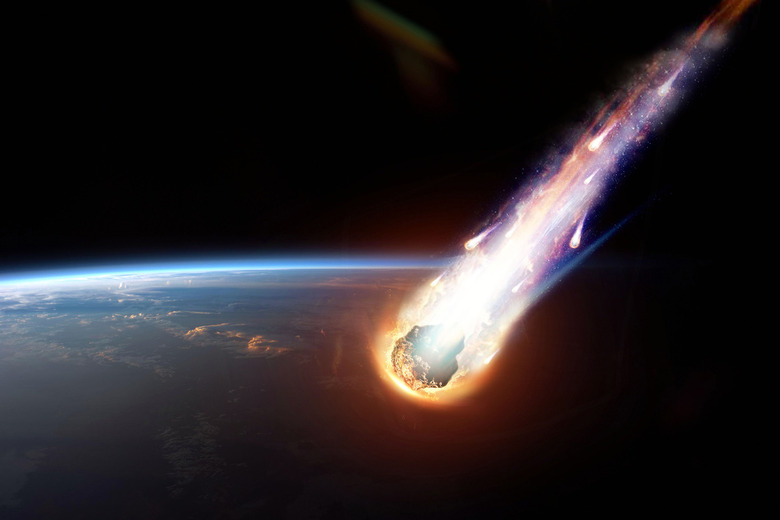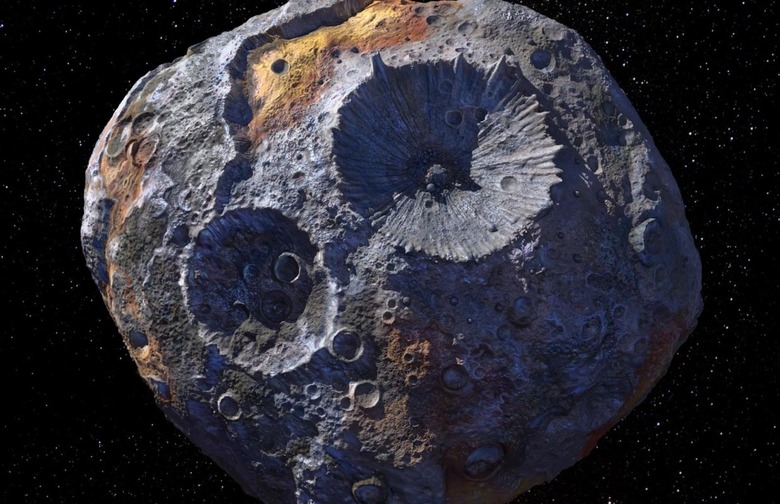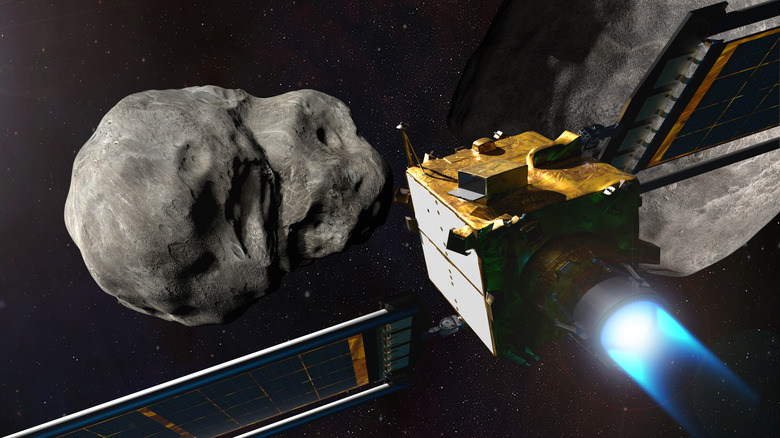This Is NASA's Plan To Stop Asteroid Impacts From Destroying Cities
Space can be terrifying. After all, there's so much we just don't know about the universe beyond our own planet's atmosphere. While a lot of the scary parts of space–like no oxygen–can't hurt us on Earth, there are some things we must concern ourselves with. Like, the possibility of needing to stop an asteroid impact capable of destroying an entire city.
Considering the size of some of the asteroids out there, it isn't surprising that NASA and other space agencies are worried about one impacting the Earth. After all, NASA says that an asteroid of at least 460 feet in diameter could destroy an entire city if it hit the planet. Further, asteroids at least .6 miles or more could cause global effects or even mass extinctions events.
But what exactly are we doing to fight back against these devastating threats? Well, NASA has a few ideas in mind.
Searching for near-Earth objects
Finding ways to stop asteroid impacts isn't a new goal that NASA has undertaken. As BigThink points out, the space agency has been tasked with searching for near-Earth objects capable of hurting the planet for decades at this point.
Despite all that time looking, though, NASA has only managed to track 28,266 objects that are 460 feet or larger. Over 800 of those discovered so far are large enough to cause global effects if they crash into the planet. This presents a huge problem, especially since asteroids have a habit of sneaking up on Earth.
To help close the gap and discover more near-Earth objects, NASA plans to develop a space-based telescope that uses infrared to discover and characterize any objects that come within 30 million miles of Earth's orbit.
How NASA plans to stop asteroid impacts
So, there are plans to help find them. But, how does NASA plan to stop asteroid impacts altogether? Well, the space agency has a number of things in the works.
First, there's the Double Asteroid Redirection Test or DART. This spacecraft is designed to be rammed into asteroids in an attempt to change their flight course. NASA is currently undergoing a test of the DART spacecraft. The spacecraft is expected to approach its target, Didymos B, and collide with it later this year.
Another possible option is to detonate a nuclear warhead close to the asteroid in an attempt to throw off its course. But that's really only for very large asteroids. Another possible way to stop asteroid impacts is to put a spacecraft very close to smaller-sized asteroids. Then, the gravity of the craft could possibly change the object's orbit.
Of course, changing an asteroid's path isn't going to be easy. And, if NASA wants to truly stop asteroid impacts, it's going to need to discover threats early, and then find ways to mitigate possible issues years in advance. Still, it's nice to know the space agency is looking for ways to stop humanity from ever having to experience something so catastrophic.


